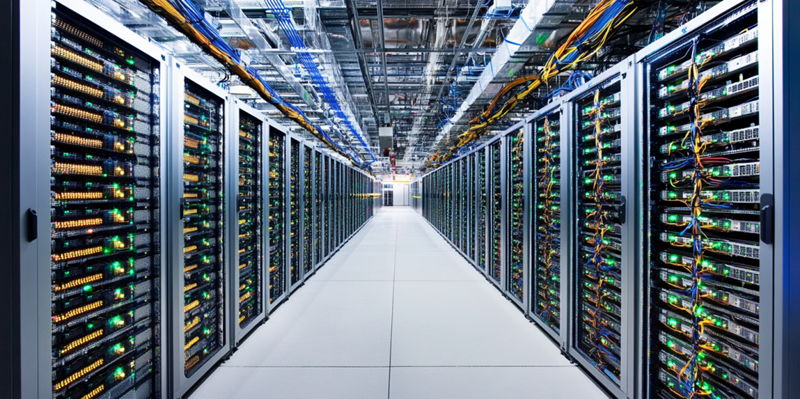Microsoft is innovatively constructing two data centers in Northern Virginia using cross-laminated timber (CLT), marking a novel approach in the data center sector. This groundbreaking construction method, incorporating wood, steel, and concrete, promises significant reductions in the facilities’ embodied carbon footprint. CLT is estimated to lessen the carbon impact by 35% compared to conventional steel and 65% compared to typical precast concrete. This initiative is a vital part of Microsoft’s broader strategy to achieve carbon negativity by 2030 and eliminate the equivalent of all the carbon it has emitted since its founding by 2050.
Embracing Cross-Laminated Timber: A New Era in Sustainable Construction
Cross-laminated timber, a fire-resistant and prefabricated wood material, offers substantial benefits in terms of both safety and efficiency. Its installation process is notably faster and safer compared to traditional materials like corrugated steel. Additionally, even though CLT may have higher initial material costs, this can be offset by the reduced construction times, making it a financially viable option. David Swanson, Microsoft’s structural engineer, underscores the company’s commitment to validating the suitability, safety, and resilience of these innovative materials specifically for data centers, ensuring they meet rigorous industry standards.
Microsoft’s push for sustainability doesn’t stop at the materials used in construction. The company imposes stringent contractor requirements to utilize low-carbon materials and equipment. This commitment extends to fostering collaborations with suppliers to lower the embodied carbon in their products, thereby influencing the broader market towards more sustainable practices. Moreover, Microsoft’s exploration into other sustainable materials, such as earth, algae, and hemp for data center construction, signifies a forward-thinking approach to environmental responsibility.
Investments in Innovative Technologies for Sustainability
In addition to utilizing sustainable construction materials, Microsoft has invested in cutting-edge technologies to further reduce its carbon footprint. One of these technologies includes CarbonCure, which involves injecting CO2 into concrete, a process that reduces emissions by a modest 5% per batch. Nevertheless, this represents a significant stride forward in the pursuit of emissions reduction. Similarly, Prometheus Materials is another investment of note, focused on producing zero-carbon cement using microalgae, offering promising advancements in sustainable construction.
Furthermore, Microsoft’s support of innovative companies and processes continues with Stegra’s initiatives aimed at cutting steel emissions by 95% and Boston Metal’s method that produces oxygen instead of carbon dioxide during steel manufacturing. These efforts are part of a broader strategic vision that seeks to revolutionize traditional industrial processes and significantly lessen their environmental impact. Such pioneering initiatives are a testament to Microsoft’s commitment to not only reducing its direct emissions but also addressing the indirect emissions associated with its infrastructure and operations.
A Comprehensive Approach to Long-Term Environmental Goals
The overarching trend initiated by Microsoft reflects a significant shift towards sustainable construction practices and innovation in material use. By adopting a comprehensive approach, Microsoft emphasizes reducing indirect emissions through ambitious, collaborative efforts across the industry. These efforts support the narrative that sustainability and innovation are integral to achieving long-term environmental goals, influencing industry standards and encouraging widespread adoption of similar practices.
Creating data centers that are both efficient and environmentally responsible showcases Microsoft’s leadership in sustainable technology. Microsoft’s comprehensive sustainability strategy involves not only adopting eco-friendly materials and technologies but also ensuring their widespread implementation through partnerships and stringent contractor requirements. By setting a precedent, Microsoft aims to inspire other tech giants and industries to follow suit, ultimately fostering a more sustainable future for the technology sector.
Conclusion
Microsoft is pioneering the construction of two data centers in Northern Virginia by utilizing cross-laminated timber (CLT), a unique and innovative approach in the data center industry. This method employs a combination of wood, steel, and concrete, leading to a marked reduction in the embodied carbon footprint of these facilities. Specifically, CLT can decrease the carbon footprint by 35% compared to conventional steel and by 65% compared to standard precast concrete. The initiative is a crucial element of Microsoft’s broader commitment to becoming carbon negative by 2030. Furthermore, it aligns with the company’s ambitious goal to remove the equivalent of all carbon it has emitted since its inception by 2050. This sustainable construction approach not only showcases Microsoft’s dedication to environmental responsibility but also sets a new precedent in the data center sector for reducing carbon emissions and promoting eco-friendly building practices.

